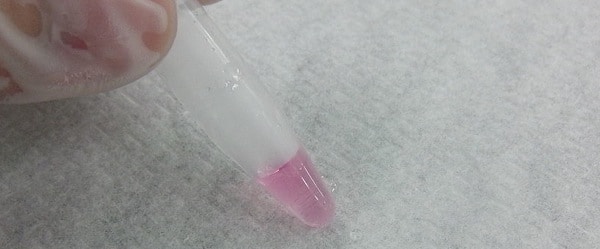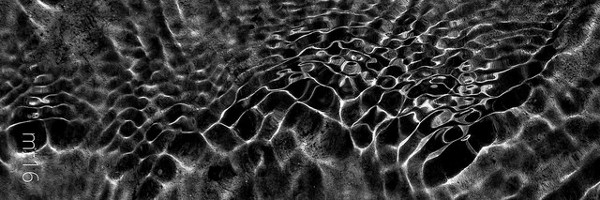I think that transferring Western blots is one the most enjoyable tasks to do in a lab: it’s quick, it’s messy, and on some gleeful level, it feels like a child’s art project gone wrong. Of course, it’s also finicky and slippery and prone to tiny pitfalls that can noticeably affect the quality of your final blot. In this article, we’ll talk about a few different ways to transfer a gel onto a membrane, and the advantages and disadvantages of both.
Standard wet transfer
The basic wet transfer is probably the most common transfer method. To do a wet transfer, you put together a “sandwich” of layers, including filter paper, your gel, and the membrane. These components are all well-soaked with transfer buffer, and then locked into a transfer cassette as a sandwich. The transfer cassette is then immersed in a transfer apparatus filled with buffer, and an electrical current is applied to mobilize the proteins to migrate from the gel onto the membrane. This type of transfer can be run “hot” in an hour or two, but is often run slowly (from several hours to overnight) to preserve the crisp resolution of the bands.
Wet transfers are more quantitative and consistent than rapid blotting systems. However, if you’ve ever assembled one of these by hand, you know that it can be quite tricky to keep tiny air bubbles out from between the layers. Because there is no conductive buffer in the areas that these bubbles are touching, no proteins will transfer at that spot, leading to a spotty or obscured signal on your membrane.
Semi-dry/rapid transfer (i.e. iBlot)
Another common transfer method, often used by well-funded labs who can afford specialized equipment, is a semi-dry, or rapid, transfer. The transfer stack is composed of the same layers used in a standard transfer (i.e. filter paper, gel, and membrane). In this case, though, the layers come pre-assembled and soaked in buffer. To perform the transfer, you apply your gel to a pre-assembled stack, which is then topped off with a flat electro-conductive layer. The whole stack is then inserted horizontally into the rapid transfer apparatus. From the time you hit start on the apparatus, the entire transfer takes about 7 minutes.
The obvious appeal of the rapid transfer technique is that it is much, much quicker than a standard wet transfer, and also takes less hands-on assembly time. However, the quickness of the transfer can lead to problems with patchiness or unevenness, so the resulting blot may not be very clear or pretty. Also, this method is much more expensive, as it requires specialized equipment, and prepackaged consumable materials.
Capillary transfer
The traditional, “old-school” method of transferring gels is by capillary transfer. In contrast to wet or dry transfer protocols, capillary transfer uses diffusion, instead of an electric current, to mobilize proteins out of a gel and onto a membrane. The transfer stack contains the same components as in any transfer (filter paper, gel, and membrane). To activate transfer, the stack is placed horizontally over a reservoir filled with transfer buffer, over a “wicking” piece of filter paper, whose ends are in contact with the reservoir buffer. The topmost layers of filter paper in the transfer stack are dry, so diffusion will pull buffer through the wick, through the layers of the transfer stack, and towards the dry layers on the top of the stack. This process is encouraged by placing a weight on top of the whole stack, which ensures that all the layers are in close contact and that the buffer will diffuse quickly throughout all the layers. Take a look at this article to see how you can simultaneously transfer one gel onto two membranes by capillary transfer.
One significant benefit of capillary transfer is that it can handle gels that are too thick to fit in a standard transfer apparatus. In fact, you can customize the transfer to any size gel you want, limited only by the size of your reservoir container. The main drawback of capillary transfer is that it is a much slower process than even the standard wet transfer; a complete capillary transfer generally needs to go at least overnight, if not longer.
The transfer method you choose to use ultimately depends on your experimental design, i.e. what your gel is like, what you need the blot for, and your budget. For more information on all of these transfer methods, check out this excellent tutorial video from Agrisera.
Want all your Western blot buffer recipes, an ECL reagent recipe, and an easy protocol all in one place and on hand? Download our free Western blot cheat sheet.







